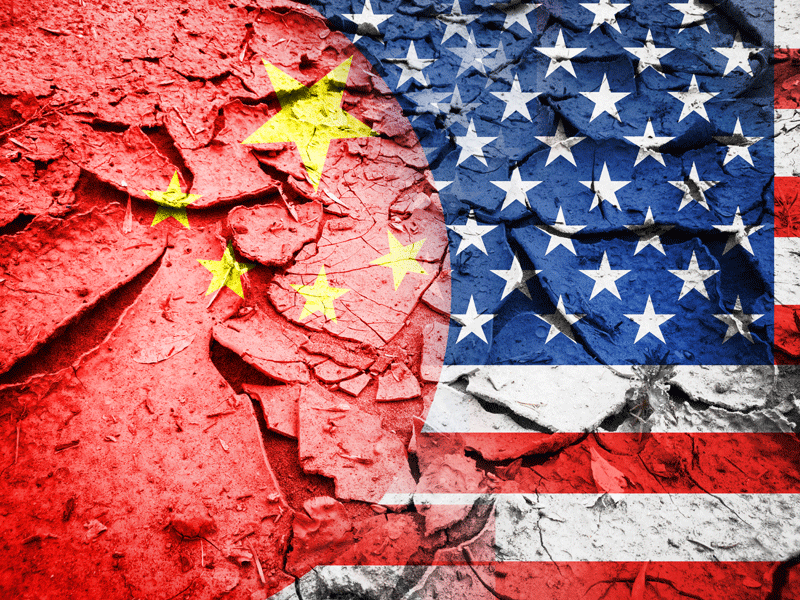By John Ubaldi
Columnist, In Homeland Security
A two-day G-20 Summit begins in Osaka, Japan, on Friday, which looks a bit more interesting than previous meetings.
This summit will open with a very important meeting between the presidents of the United States and China to see if they can resolve their current tariff war.
The G-20 Summit is an international conference established in the late 1990s as a forum among the wealthiest countries. It has since morphed into an international meeting of governments and central bank governors, and now includes the leaders of the 20 wealthiest countries and the European Union.
China and U.S. to Discuss Ending Trade War
The expected meeting between President Trump and Chinese President Xi Jinping will be one of the highlights of this year’s forum when they discuss how to end their ongoing trade dispute that has the potential to disrupt global markets.
Former U.S. Ambassador to China Max Baucus recently estimated that there was a 50-50 chance of a trade deal between the U.S. and China emerging from the G-20 gathering. “So far, President Trump has been hot and cold — he says things are great one day, and then he blames China the other day, so that’s very hard to tell,” Baucus said, according to CNBC.
At last year’s G-20 summit in Argentina, the U.S. and China agreed to a 90-day trade ceasefire, which put off the tariff war for months. However, the tariff war restarted last week with both countries claiming the other was not acting in good faith. This will be the first face-to-face meeting between Trump and Xi since their trade talks fell apart last month. So the stakes for ending the trade conflict at Osaka are high.
U.S. Complains about Chinese Trade Practices
Throughout the trade dispute, the United States has consistently complained about Chinese practices that violate World Trade Organization (WTO) rules as they relates to intellectual property theft.
Past U.S. presidents have also complained about this practice, but Trump has utilized tariffs as a negotiating tactic. He also has accused China of stalling in hopes of receiving better treatment from a potential Democratic administration after the 2020 presidential election.
In response to China’s perceived stalling, Trump raised tariffs on $200 billion worth of Chinese imported products from 10 percent to 15 percent. In addition, he threatened to add additional tariffs on the remaining Chinese products, which could amount to around $339 billion.
Many economists fear that a full-blown trade war between the world’s two largest economies will be detrimental to both countries and have a severe impact on the global economy.
Managing Director of the International Monetary Fund Christine Lagarde, writing on the IMFBlog, commented that “We estimate that the recently announced and envisaged US-China tariffs could subtract about 0.3 percent from global GDP in 2020, with more than half of the impact stemming from business confidence effects and negative financial market sentiment.”
Lagarde hopes that resolving the current trade tensions while stepping up the modernization of the international trade system will be a major priority at the G-20 Summit. This includes building consensus among the member countries on how to strengthen WTO rules, especially on subsidies, intellectual property and trade in services.
The goal is to create a more open, stable and transparent trade system – one that is well-equipped to serve the needs of 21st century economies.
Trump Optimistic in Upcoming Meeting with Chinese Leader
Trump has said he is optimistic about meeting with the Chinese president and that both sides should keep communications open. The president recently tweeted that he “Had a very good telephone conversation with President Xi of China. We will be having an extended meeting next week at the G-20 in Japan. Our respective teams will begin talks prior to our meeting.”
According to Chinese state television CCTV, Xi said, “I am willing to meet the president during the G20 summit in Osaka to exchange opinions on the fundamental issues of the development of US-China relations.”
Beyond trade, the other lingering issue is the problematic situation with North Korea. President Trump seems to be suggesting linking the trade talks with Beijing’s willingness to restrain North Korea’s nuclear program. With Xi having visited Pyongyang one week before the G-20, many observers are speculating that the Chinese leader is hoping for movements on both on-going issues.
Either way, this will be one of more interesting and challenging summits in recent memory – and one that will likely have some significant global consequences.


Leave A Comment
You must be logged in to post a comment.